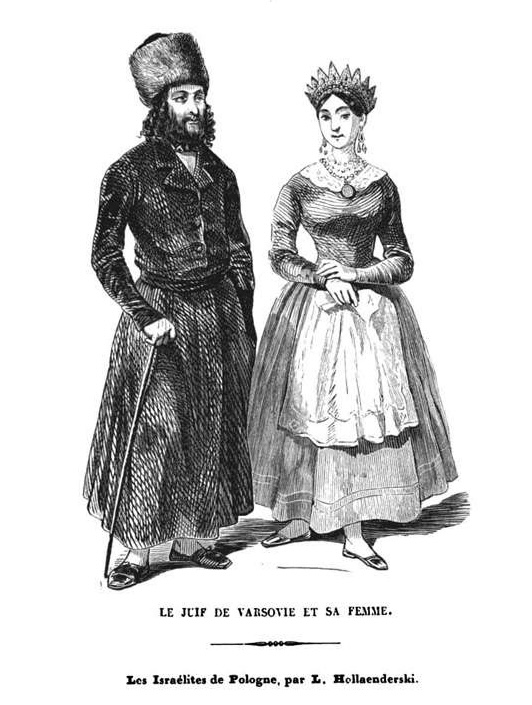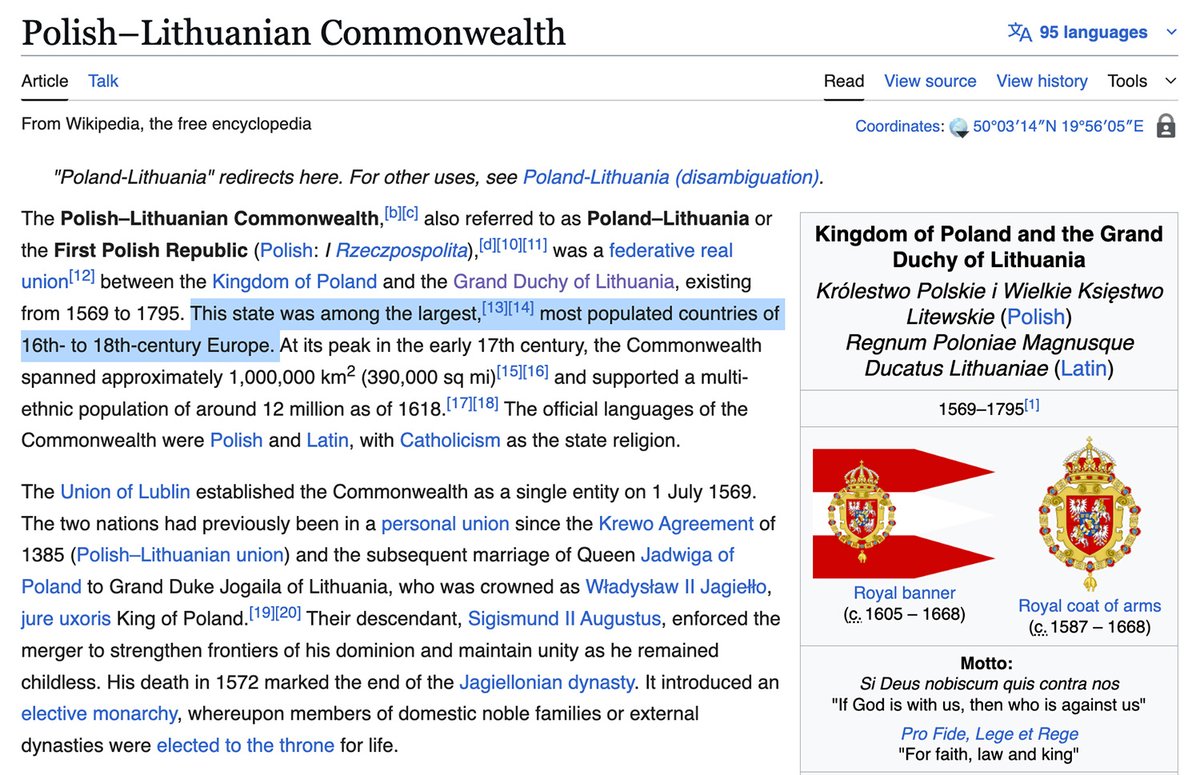
It is those alone who love knowledge, who follow reason as the supreme guide, and seek truth as the great end, to whom I appeal.
7 subscribers
How to get URL link on X (Twitter) App


 The Polish-Lithuanian Commonwealth, 1569-1795, was among the largest, most populated countries of Europe from the 16th to 18th centuries.
The Polish-Lithuanian Commonwealth, 1569-1795, was among the largest, most populated countries of Europe from the 16th to 18th centuries. 

 “The Phoenicians... extended their voyages past the gates of the world into the unknown ocean in search of both the amber of the Northern Sea and the tin of Cornwall...”
“The Phoenicians... extended their voyages past the gates of the world into the unknown ocean in search of both the amber of the Northern Sea and the tin of Cornwall...” 


 “The oligarchical system of Great Britain is not an autochthonous product of English or British history. It represents rather the tradition of the Babylonians, Romans, Byzantines, and Venetians which has been transplanted into the British Isles through a series of upheavals.”
“The oligarchical system of Great Britain is not an autochthonous product of English or British history. It represents rather the tradition of the Babylonians, Romans, Byzantines, and Venetians which has been transplanted into the British Isles through a series of upheavals.” 

 “I, in common with almost every English statesman, sincerely desire the rupture of the American Union.”
“I, in common with almost every English statesman, sincerely desire the rupture of the American Union.”

 First, the Pontifico-royal period, which lasted from the earliest times to the epoch of the Greek republics. In the pontifico-royal period money was coined exclusively in the temples, and stamped with the sacred emblems of religion.
First, the Pontifico-royal period, which lasted from the earliest times to the epoch of the Greek republics. In the pontifico-royal period money was coined exclusively in the temples, and stamped with the sacred emblems of religion. 

 “it is certainly preferable to have a great national bank, founded on almost exactly the lines of the Bank of England...the great National Bank of England is entirely in the hands of the greatest business men of the country, who have no interest whatever in politics...”
“it is certainly preferable to have a great national bank, founded on almost exactly the lines of the Bank of England...the great National Bank of England is entirely in the hands of the greatest business men of the country, who have no interest whatever in politics...” 

 In recent times the historical connection between Hebrews and Phoenicians has been purposely concealed or marginalised. But in the 19th to early 20th century, Jewish writers and archaeologists were actively bringing to light this shared kinship.
In recent times the historical connection between Hebrews and Phoenicians has been purposely concealed or marginalised. But in the 19th to early 20th century, Jewish writers and archaeologists were actively bringing to light this shared kinship. 

 The early guildsmen were not merely merchants, traders and craftsmen. They were, as we shall see, bankers and financiers, and it is difficult to exaggerate the importance of the part they played in building up the financial supremacy of London.
The early guildsmen were not merely merchants, traders and craftsmen. They were, as we shall see, bankers and financiers, and it is difficult to exaggerate the importance of the part they played in building up the financial supremacy of London. 

 The original foundation was ceremonially opened by Queen Elizabeth I who granted it, its ‘royal’ title. The exchange building has twice been destroyed by fire and subsequently rebuilt. The current building was opened in 1844.
The original foundation was ceremonially opened by Queen Elizabeth I who granted it, its ‘royal’ title. The exchange building has twice been destroyed by fire and subsequently rebuilt. The current building was opened in 1844. 

 I say with respect to the actual form of their Lodges, and not as to the substance of their mysteries; for there had existed Free-masons long since in England who pretended neither to descend from the Knights Templars nor the Grand Lodge in Scotland.
I say with respect to the actual form of their Lodges, and not as to the substance of their mysteries; for there had existed Free-masons long since in England who pretended neither to descend from the Knights Templars nor the Grand Lodge in Scotland. 

 GENOA - called by the ancient Romans Genua - boasts a traditional antiquity even greater than Rome herself. According to her old chroniclers, who spent much time and learning upon the dream, her Romulus and Remus were Phaeton and his companion Genuus!
GENOA - called by the ancient Romans Genua - boasts a traditional antiquity even greater than Rome herself. According to her old chroniclers, who spent much time and learning upon the dream, her Romulus and Remus were Phaeton and his companion Genuus! 

 they not only traded with, but colonized Spain, the British Islands, and Celtic Gaul, expelling or extirpating the previous inhabitants, and planting therein their own people.
they not only traded with, but colonized Spain, the British Islands, and Celtic Gaul, expelling or extirpating the previous inhabitants, and planting therein their own people. 

 Baal, is understood to have been the same with the Phoenician Moloch; he was the demon of fire, to whom, for the purpose of appeasing his wrath, men, and especially children, were sacrificed in a most cruel and revolting manner.
Baal, is understood to have been the same with the Phoenician Moloch; he was the demon of fire, to whom, for the purpose of appeasing his wrath, men, and especially children, were sacrificed in a most cruel and revolting manner. 

 “early propensity of Mohammed in favor of the Jews. Their rejection of him converted his friendship into opposition and resentment,
“early propensity of Mohammed in favor of the Jews. Their rejection of him converted his friendship into opposition and resentment,

 “Genoa was founded, if tradition lies not, by one Janus, of the early lineage of the patriarch Abraham – head of a roving Urian family – her fame and greatness were established by another Janus, grandson of that world-wide famous navigator, Noah –
“Genoa was founded, if tradition lies not, by one Janus, of the early lineage of the patriarch Abraham – head of a roving Urian family – her fame and greatness were established by another Janus, grandson of that world-wide famous navigator, Noah – 

 the origin of the theogony of the ancient world... was an ingeniously contrived scheme of certain learned priests of the Phoenicians, under an allegorical system to deceive mankind and draw profit by imposing upon their ignorance and credulity.
the origin of the theogony of the ancient world... was an ingeniously contrived scheme of certain learned priests of the Phoenicians, under an allegorical system to deceive mankind and draw profit by imposing upon their ignorance and credulity. 

 “The avowed object of the Templars was to protect the Christians who came to visit the Holy Places: their secret object was the re-building of the Temple of Solomon on the model prophesied by Ezckiel.”
“The avowed object of the Templars was to protect the Christians who came to visit the Holy Places: their secret object was the re-building of the Temple of Solomon on the model prophesied by Ezckiel.” 

 “The historical principle of the Biblical writers is very simple. The world revolves about Judaism. The interest of the present and future is concentrated in the chosen people of the Synagogue, and is reflected in the forms of historic retrospection or allegorical contemplation.”
“The historical principle of the Biblical writers is very simple. The world revolves about Judaism. The interest of the present and future is concentrated in the chosen people of the Synagogue, and is reflected in the forms of historic retrospection or allegorical contemplation.” 

 The origins of the church are obscure, but there was certainly an abbey on the site by the mid-10th century housing Benedictine monks.
The origins of the church are obscure, but there was certainly an abbey on the site by the mid-10th century housing Benedictine monks. 

 The structure of the Phoenician settlements was linked with the homeland mercantile companies, in a family based organisation, which might have been operating in towns like Ugarit or Tyre.
The structure of the Phoenician settlements was linked with the homeland mercantile companies, in a family based organisation, which might have been operating in towns like Ugarit or Tyre. 